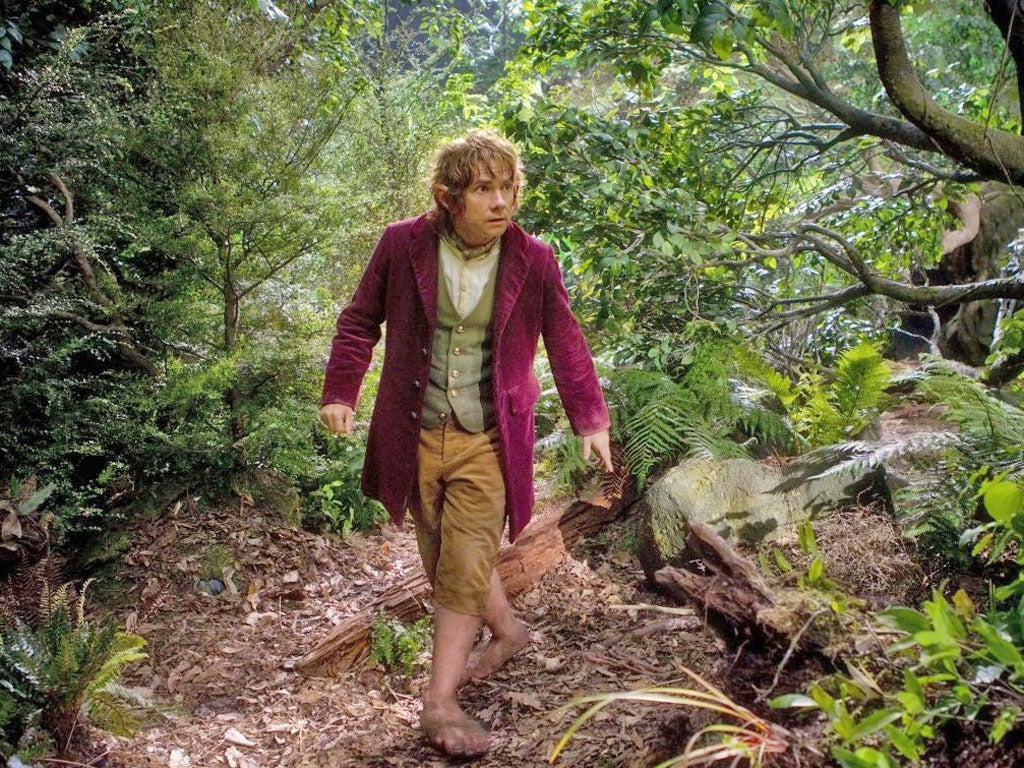The Hobbit movie is no fantasy for animals
Allegations of animal cruelty on the set of The Hobbit threaten to tarnish the film's reputation. So has director Peter Jackson done enough to answer them?

Your support helps us to tell the story
From reproductive rights to climate change to Big Tech, The Independent is on the ground when the story is developing. Whether it's investigating the financials of Elon Musk's pro-Trump PAC or producing our latest documentary, 'The A Word', which shines a light on the American women fighting for reproductive rights, we know how important it is to parse out the facts from the messaging.
At such a critical moment in US history, we need reporters on the ground. Your donation allows us to keep sending journalists to speak to both sides of the story.
The Independent is trusted by Americans across the entire political spectrum. And unlike many other quality news outlets, we choose not to lock Americans out of our reporting and analysis with paywalls. We believe quality journalism should be available to everyone, paid for by those who can afford it.
Your support makes all the difference."What do you fear, lady?" Aragorn asks in JRR Tolkien's The Return of the King. Éowyn replies, "A cage. To stay behind bars …".
The animals, more than two dozen of them, didn't even get a cage: they lost their lives during production of Peter Jackson's The Hobbit: An Unexpected Journey in freakish and no doubt preventable ways. A rep for Jackson acknowledged the lives lost but said that some died of natural causes. The deaths are worth remembering as the film is set to premiere in the UK, just two days after International Animal Rights Day is recognised around the world.
Unlike Frodo Baggins, animals don't aspire to do "great deeds" (although if you realise that the albatross was the first living being to circumnavigate the globe and that ants built boats out of leaves to cross mighty rivers before any human, they certainly can carry them out). They ask for far less: simply to be able to live their lives, seek out small pleasures and basic pursuits and go about their business without being captured and controlled, tormented and slaughtered.
In the production of The Hobbit, goats and sheep were reportedly corralled in crowded pens, kept on land full of burrows that caused them to lose their footing and exposed to a variety of other hazards from which they could not escape. Chickens, naturally timid birds, were left at the mercy of marauding dogs and were chased down and killed.
Four wranglers who worked on the set and saw animals being hurt and killed say that they repeatedly asked those with the power to take corrective action, but their concerns were ignored. Two horses were stampeded over steep embankments and died (one was found the following morning with a broken neck and her head submerged in water), one horse sustained a severe injury after being housed with other horses despite previous conflicts and sheep broke their legs in sinkholes. A spokesman for director Peter Jackson said the company had improved the conditions for the animals after two of the horses died. He told AP the production company had spent hundreds of thousands of dollars on improving the facilities at the farm. But PETA is outraged by what we see as his cavalier attempts to shirk responsibility. And then there was the cruelty in tying a horse's ankles together for more than three hours reportedly because he was deemed "too energetic" for his rider.
No matter how big a Tolkien fan one may be, there is no justification for animals to die for the sake of a movie.
Although faced with a public outcry that would make an Orc flinch, director Peter Jackson has deflected these serious charges by focusing on the use of animals during his action sequences – even though they were off camera when they came to harm. “The producers completely reject the accusations that 27 animals died due to mistreatment during the making of the films," he wrote in a statement. "Extraordinary measures were taken to make sure that animals were not used during action sequences or any other sequence that might create undue stress for the animals involved. Over 55 per cent of all shots using animals in The Hobbit are in fact computer generated; this includes horses, ponies, rabbits, hedgehogs, birds, deer, elk, mice, wild boars and wolves. The American Humane Association (AHA) was on hand to monitor all use of animals by the production. No animals died or were harmed on set during filming. We regret that some of these accusations by wranglers who were dismissed from the film over a year ago are only now being brought to our attention. We are currently investigating these new allegations and are attempting to speak with all parties involved to establish the truth.”
Jackson has even less of an excuse than most: he's the Gandalf of CGI – computer-generated imagery – yet to me he's apparently playing the role of Sauron, wielding power and control over animals simply because he can. That shouldn't happen in any production in which animal welfare is at stake, let alone one with this kind of budget.
Technology has changed the direction of movie-making with astonishing speed and precision. Those who are still resorting to using live animals will be left behind faster than that kid in Home Alone.
Ingrid E Newkirk is managing director of People for the Ethical Treatment of Animals (PETA) UK.
Join our commenting forum
Join thought-provoking conversations, follow other Independent readers and see their replies
Comments